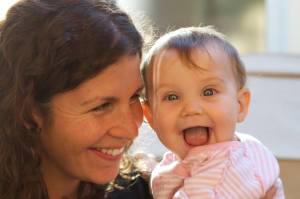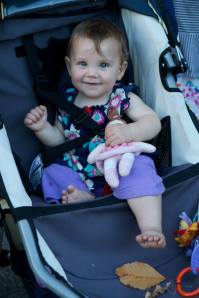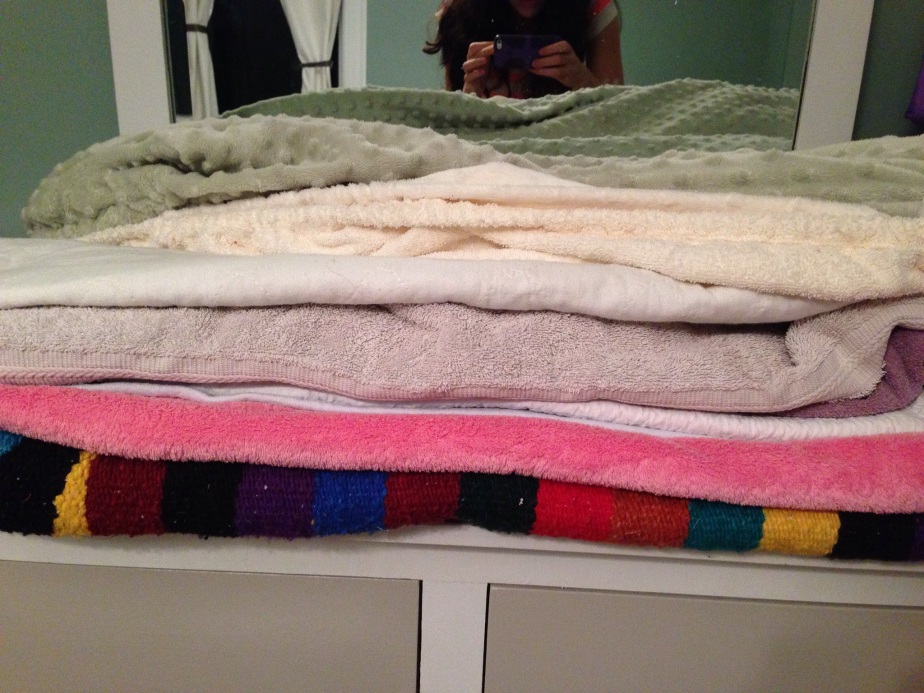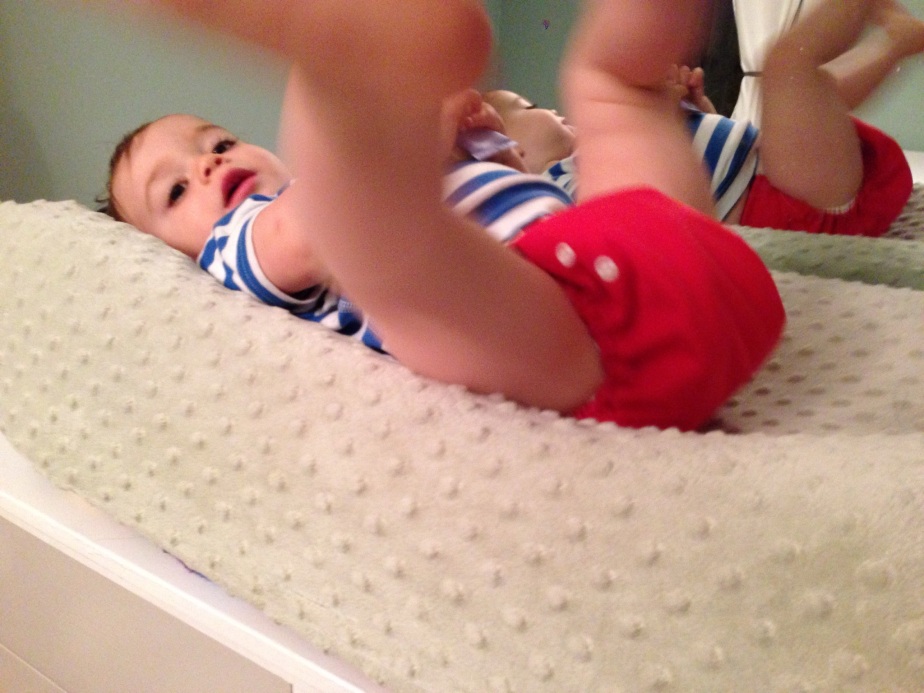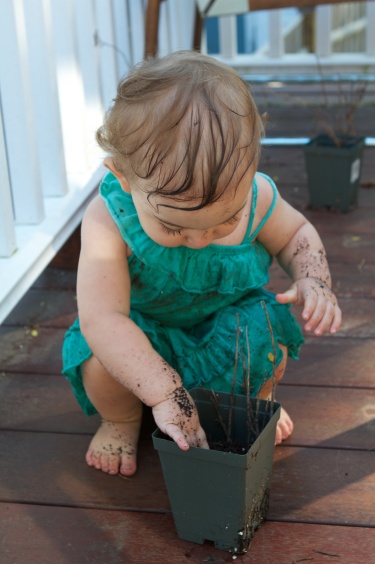Want to learn more about other baby-friendly practices, like elimination communication, baby-led weaning, co-sleeping, and baby-wearing? Check out our book, The Other Baby Book: A Natural Approach to Baby’s First Year. The e-version is FREE from October 9-12!!
**********************************************************************************************************************************************************
 Americans live in a land of extremes. Our cultural norms can shift dramatically in a matter of years. In terms of elimination, we’ve gone from strict, regimented and arguably abusive potty training, to a permissive, wait-til-he’s-ready-even-if-it’s-five approach. To set the stage for our country’s infant toileting practices, we’ll give you a crash course in the last 100 years of American pottying.
Americans live in a land of extremes. Our cultural norms can shift dramatically in a matter of years. In terms of elimination, we’ve gone from strict, regimented and arguably abusive potty training, to a permissive, wait-til-he’s-ready-even-if-it’s-five approach. To set the stage for our country’s infant toileting practices, we’ll give you a crash course in the last 100 years of American pottying.
Surprisingly, we found little evidence of early EC pioneers in the States. Rather than throwing off the shackles of diapers during the revolution, our ancestors focused on tea. The good news is they left the best part of the rebellion – the part with environmental, economic, and relationship perks – to moms like us!
Starting around 1900, parents were urged by family doctors to strictly toilet train babies before they could walk. Moms were doubly motivated to train their babies. With no electric washing machines, moms were eager to stop washing diapers by hand. Health concerns also played an important role. Moms feared constipation, which can lead to many health issues. Staying regular from an early age was an important way to keep healthy. So far, so good, but here’s the catch. Rather than serving up prunes, moms inserted sticks of soap into baby’s bottom. Dr. Herman Bundesen, author of Our Babies wrote,
“Before the mother begins the 10:00 morning nursing, she should place the pot, a roll of toilet paper, a soap stick, a towel, and a glass of hot water (to wet the soap stick) upon the table within easy reach….If after several minutes [on the pot], the bowel movement does not take place…the soap stick should be inserted and held into place until the bowels begin to move, but not longer than ten minutes….If this is kept up for three or four days, the baby usually will have learned to have regular bowel movements at the end of this time without the use of the soap stick.”
Are you getting a picture of early American infant toilet training? It wasn’t a feel-good rite of passage, complete with sticker charts and M&M’s. In the 1920s, our buddy Dr. Watson also endorsed early toilet training. He told parents to hold a chamber pot under their newborn, and to begin a serious training regimen by three months. Some parents strapped their infants to small potty chairs as soon as they had neck control.
These harsh toilet training methods made a lasting impression on our society. In the 1940s, Dr. Benjamin Spock, the most prominent babycare authority of his time, revolted against early toilet training and recommended waiting until babies sat independently, around seven to nine months, before starting. But the biggest paradigm shift came from Spock’s successor, pediatrician T. Berry Brazelton, who felt children were not ready to deal with their elimination needs until 24 to 30 months. His theory was based on observation of one-to-two year old children whose parents used rigid toilet training methods. According to Brazelton’s 1999 book Toilet Training – The Brazelton Way, fears that children wouldn’t complete training in a timely manner spurred parents to use both rewards and punishments, which traumatized young children, and resulted in constipation from withholding bowel movements; bed-wetting; and smearing stools.
Brazelton and co-author Dr. Joshua Sparrow articulated seven clear “readiness” signs. He urged parents not to begin before all seven were present. Among the signs are the ability to say “no,” bowel regularity and bodily awareness.
Brazelton’s research launched child-initiated toilet training, which is now the dominant practice in the U.S. and much of the western world. However, his work contains several flaws. He claims that bed-wetting is caused by early toilet training. Ironically, in his own study, Brazelton found that a clear majority of bed wetters were toilet trained after age two. Also, Brazelton claims that children have no sphincter control until 18 months or older. Common sense tells us this is false – if babies had no sphincter control, they would leak urine constantly, rather than releasing when their bladders are full.
It’s worth noting that Brazelton has profited from his opinion, which has in turn fed the $25+ billion disposable diaper industry. In 1998, Brazelton starred in a Pampers commercial to launch a size 6 diaper — fitting children up to 70 lbs! Though each child is different, the average 70 pounder is 10 years old! Brazelton was also reportedly chairman of the Pampers Parenting Institute, and his book Touchpoints is recommended repeatedly on Pampers’ website.
Given the “determination” of their parents in the roaring 1920s, children were using the bathroom independently at 12 months. In the 1940s, the average shifted to 18 months. By the 1960s, the average age was two years. And now, in the 21st century, the average is over three years. One third of children are still in diapers after their third birthday.[ii] Yes, America is a very progressive nation. But as we’ve seen with many babycare trends, sometimes progress is, in fact, backwards.
In the meantime, several modern pioneers have launched a small but thriving movement to gently respond to baby’s pottying cues – a practice called Elimination Communication, or EC for short – in the U.S. and other western societies. In 1980, Laurie Boucke published the first “how-to” guide, a pamphlet which she has since expanded into a book, Infant Potty Training. In 2001, Ingrid Bauer published Diaper Free: The Gentle Wisdom of Natural Infant Hygiene.
In 2004, the international organization DiaperFreeBaby was launched by Melinda Rothstein and Rachel Milgroom, two Boston moms passionate about educating and building community among ECing parents worldwide. A media blitz in the mid-2000s drew thousands of new ECers, who began forming local groups around the world to support each other. In 2007, author and DFB active member Christine Gross-Loh wrote the user-friendly EC guide, Diaper Free Baby.
Interested in learning how and why our babies were using the potty from birth, and out of diapers around their first birthday? Stayed tuned for tomorrow’s post for a more practical look at EC!
Do you practice EC? If not, what holds you back?
**************************************************************************
Want to learn more about other baby-friendly practices, like elimination communication, baby-led weaning, co-sleeping, and baby-wearing? Check out our book, The Other Baby Book: A Natural Approach to Baby’s First Year. The e-version is FREE from October 9-12!!
**************************************************************************
 Megan McGrory Massaro is a mother, freelance writer, and author. She wrote The Other Baby Book: A Natural Approach to Baby’s First Year to empower women to make the best choices for their families.
Megan McGrory Massaro is a mother, freelance writer, and author. She wrote The Other Baby Book: A Natural Approach to Baby’s First Year to empower women to make the best choices for their families.
 Like many things that shaped my new parenting experience, I found out quite by accident about washing my baby’s new clothes. When my daughter was a newborn, a visiting aunt said, “You know it’s important to wash her clothes before she wears them.”
Like many things that shaped my new parenting experience, I found out quite by accident about washing my baby’s new clothes. When my daughter was a newborn, a visiting aunt said, “You know it’s important to wash her clothes before she wears them.”

![IMG_2117[1]](https://theotherbabybook.files.wordpress.com/2015/01/img_21171-e1422381443358.jpg?w=924)

